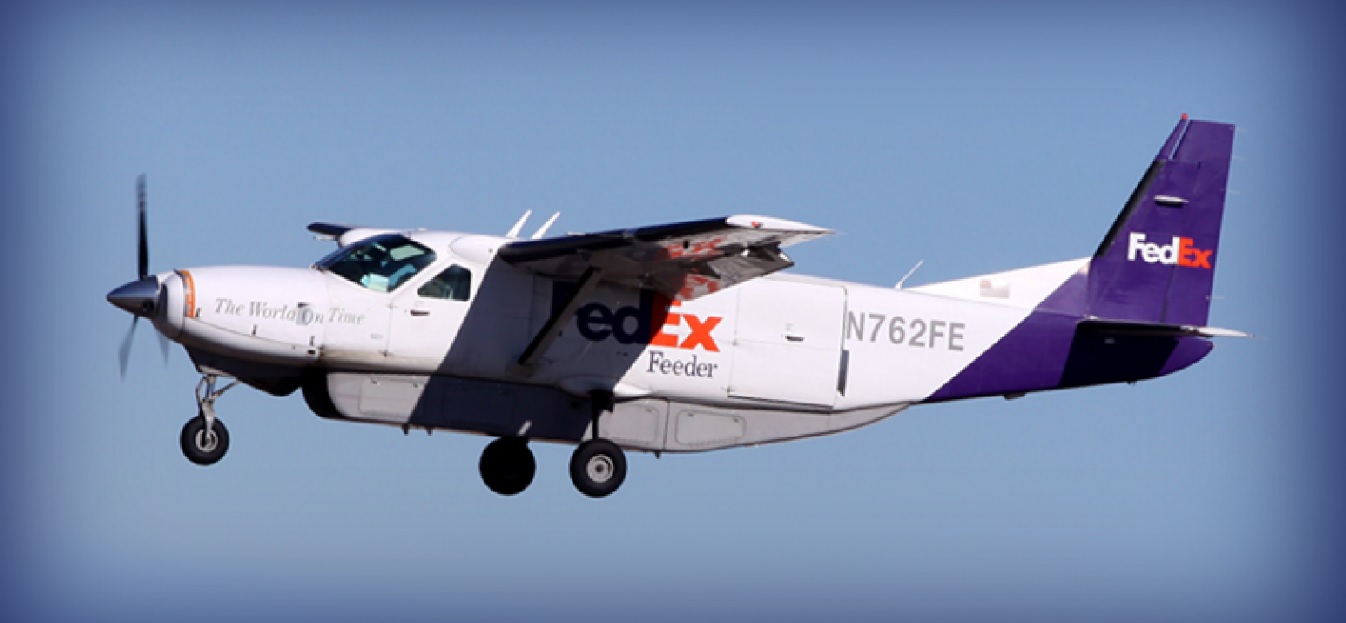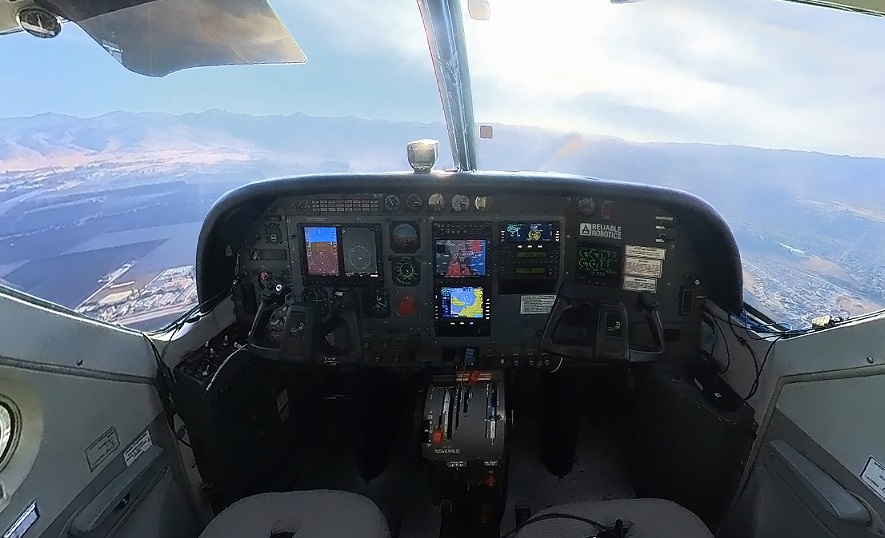A new era for the Regional Air Cargo Carriers Association
05 / 01 / 2024

Stan Bernstein. Source: RCCA.
The end of 2023 marked the end of an era. After two decades at the helm, Stan Bernstein, founding president of the US Regional Air Cargo Carriers Association (RACCA), handed over the baton to his successor, Jim Goddard of Cape Air.
A lifelong aviation aficionado, Bernstein entered the industry as a pilot for commuter airline Air New England but moved on in the 1980s to build up a fleet of Twin Otters that eventually reached 12 planes.
Later he added a facility for Pratt & Whitney engines. Half of his customers were freight carriers and Bernstein saw a niche in regional operations to airports too small for the bigger planes of the likes of FedEx and UPS.
The events of September 11, 2001 and the ensuing discussions about aviation security set off alarm bells. Some of the ideas that were circulating in Washington were well intentioned but would have put half of the carriers out of business, Bernstein recalls, pointing to suggestions for armed guards on planes.
It was necessary for the industry to provide input into the nascent security regime, but there was a problem. “Regional freight carriers had no representation in Washington,” he says.
He decided to organise a meeting of regional cargo carriers and invited executives of 14 operators to a gathering in Cessna’s facility in Wichita.
“I figured if eight showed up we could start an association representing the regional cargo industry,” he recalls. In the event, all 14 showed up as well as a couple of vendors who had got wind of the plan and invited themselves. The attendees formed a board and elected Berstein as president.
In addition to the 14 carriers, the group included three associate members – ATR, Beechcraft and FlightSafety.
The ranks swelled quickly. By the end of the first year RACCA membership had grown to 23 airlines and some two dozen associate members.
Today it nudges the 300-mark with 49 airlines and 250 associate members, including FedEx and UPS.

FedEx Feeder. Photo West Air
The association has also been running an annual conference, which drew in over 400 attendees last November.
Notwithstanding its rapid growth, RACCA is still “pretty much a volunteer organisation” to keep its costs low, according to Bernstein.
He and his board members started knocking on doors in Washington and over time established dialogues with the Federal Aviation Administration (FAA), the Department of Transportation and the Transportation Security Agency, among other bodies. This led to involvement in rulemaking processes.
Safety progress
The result has been a marked improvement in safety. Today, pilots are better trained and aircraft are equipped with better safety systems, Bernstein says.
“The freight industry suffered from a not-so-bright reputation in the past. We managed to elevate its image,” he adds.
However, RACCA could not sway the authorities when Washington was bent on tightening safety regulations drastically in response to the tragic end of Colgan Air flight 3407 in February 2009.
The regional passenger carrier’s Bombardier Q400 crashed into a house, killing all 49 people on board as well as one person in the house.
As pilot errors were identified as the cause of the accident, federal regulators raised the minimum flight hours required for commercial aircraft pilots six-fold from previously 250 to 1,500 hours.
The regime, which was introduced in 2013, was roundly criticised by commercial airlines, flight schools and industry organisations, as it seriously aggravated the pilot shortage that had already been troubling the industry.
As many pilots would graduate with 250 to 400 flying hours under their belt, the new limit shut the door on many aspiring pilots.
For many, regional airlines used to be a natural avenue to build up experience until they could advance to the cockpits of narrowbody jets of the major airlines.
Being at the bottom rung of the career ladder, regional cargo carriers were the most affected by the new rules, as their recruitment pool shrank dramatically while larger carriers offered sign-on bonuses for pilots who had 1,500 or more hours of experience.
Still, RACCA managed to score a partial victory on this front when its proposal to permit co-pilots to accumulate flight hours in the cockpit was accepted by the rule makers.
Bernstein rates this as one of RACCA’s major accomplishments.
“It’s better than towing banners,” he quips.
An unmanned future
If there is a silver lining to the ongoing shortage of pilots, it is its likely impact on the evolution of unmanned flying, he reckons.
He is convinced that the regional cargo airline industry will be the main stage for the advance into remote piloting of planes.
“RACCA members will be at the forefront,” he predicts. “The first unmanned flight is not going to be a United Airlines B777 taking off from JFK airport flying to Tokyo. It will begin with a Caravan flying from Albuquerque to Santa Fe.”
The journey in this direction is already well under way, with RACCA members in the vanguard.
In November Reliable Robotics, which operates a fleet of five Cessna Caravans for FedEx, conducted a flight in northern California with one of the integrator’s planes that are equipped for autonomous flying.

Reliable Robotics demonstrates uncrewed flight of a Cessna 208B cargo aircraft. Photo: Business Wire
The test flight, which was run in co-ordination with the FAA, was managed by a remote pilot located about 50 miles away at Reliable’s command centre.
He handled the radio calls and monitored the flight, but all stages, from taxiing and take-off to landing, were fully automated and performed by Reliable’s system.
During the summer, Reliable had performed three trial flights with pilots in the cockpit, who were monitoring the flights but did not intervene in the operation.
The company applied to the FAA for certification of its technology last summer. The process is expected to take about two years to complete.
According to Reliable, its system is plane-agnostic, so it could be used for other aircraft types.
Xwing, another RACCA member, has also applied for certification of its autonomous flight system.
In 2022 it ran an automated flight of a Cessna Grand Caravan with the pilot in the cockpit monitoring the trial.
While this is promising progress, Bernstein notes that a lot of open questions remain.
“What will be the pilot requirements? Will pilots need a medical certificate? How many aircraft will be flown by one operator – one, three, five, 10?” he asks.
“There will be a need for many new regulations and adjustments to existing regulations,” he adds.
He is proud of the pioneering role that regional cargo carriers are shouldering.
“We’re in the infancy of new technology, and RACCA is on the ground floor of that,” he says.
The organisation has geared up for this transformation. Discussions and presentations of new technologies have become a regular feature of RACCA meetings and an executive of a technology provider has been elected to its board.
Its dialogue with government agencies is bound to dwell increasingly in this arena too.
“One of the biggest question marks will be the integration into the US airspace system. How does one communicate a missed approach, or taxiing?” Berstein reflects. Some countries are ahead of the US, which can offer valuable insights, he notes.
He will not lead the discussions on this front, but he remains involved in RACCA in a consulting role for the coming year.














